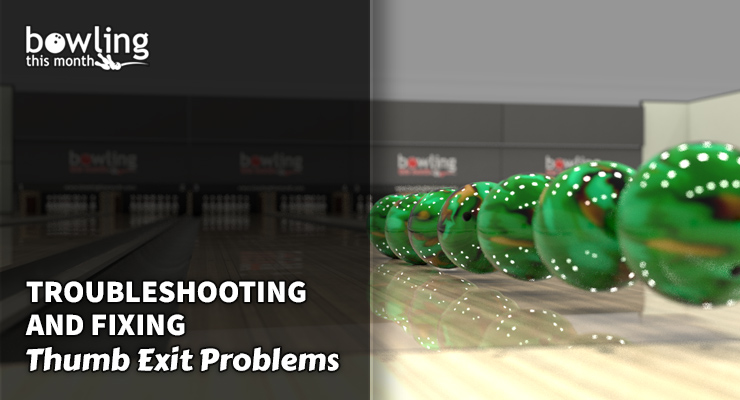One of the most complicated issues to fix in bowling is the concept of “clearing the thumb.” This refers to how consistently your thumb exits the ball as part of your release.
Thumb exit problems are so difficult to fix because the release itself only takes a split second, and we’re talking about just one piece of that. With a motion that takes a fraction of a second to complete, even the smallest change in timing can be significant. The thumb exit is also one of the last things to happen in a complex series of movements, so any number of things can go wrong before the thumb comes out of the ball. In short, there are lots of variables to contend with. With all of this in mind, it’s no surprise that many bowlers struggle to clear their thumb consistently.
A typical symptom is sticking in the thumb, causing you to loft the ball farther onto the lane and/or miss your target, usually to the inside. However, another sign of poor thumb exit timing is dropping the ball consistently or missing it at the bottom, which is more subtle.
First, let’s talk about the goal you’re trying to achieve: a consistent timing of when the thumb comes out of the ball. Most bowlers view the release as when you let go of the ball. When bowlers incorporate grip pressure and try to “let go” at the same time, inconsistency is bound to happen. Make no mistake: you can’t completely eliminate grip pressure. However, you can minimize it.
I prefer to look at the release this way: it’s when the ball lets go of you. With proper fit and technique, the ball should have no choice but to come off at a specific moment in time, every time. A bowler’s “flat spot” at the bottom of the swing should be that time. So, the overall goal is to get the ball fit and your game to allow your ...
This article is only available to Bowling This Month subscribers. Click below to get instant access to this article and all of our other premium instructional content.
Subscribe to Bowling This Month
Already a Bowling This Month subscriber? Click here to log in.
